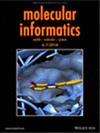两全其美:利用三个工业合作伙伴提供的数据扩展最先进的 pKa 模型
IF 3.1
4区 医学
Q3 CHEMISTRY, MEDICINAL
引用次数: 0
摘要
通过 Simulations Plus 与几家工业合作伙伴之间的独特合作,我们开发出了之前发布的硅 pKa 模型 S+pKa 的 11.0 新版本,大大提高了预测准确性。通过从 F. Hoffmann-La Roche AG、Genentech Inc.之前的 S+pKa v7.0 版本是根据来自公共资源和拜耳股份公司制药部门的数据进行训练的。在对三个新的贡献化合物集进行外部验证时,该模型的预测准确性有了显著提高。较少预期的是,即使没有为 v11.0 提供额外数据,v11.0 在 v7.0 发布后(2013-2023 年)对拜耳医药公司开发的新化合物的预测能力也有所提高。我们通过五个领域(公共领域和工业领域)中遇到的化学物质说明了化学空间的覆盖范围,概述了模型的构建,并讨论了模型成功的因素。本文章由计算机程序翻译,如有差异,请以英文原文为准。
Best of both worlds: An expansion of the state of the art pKa model with data from three industrial partners
In a unique collaboration between Simulations Plus and several industrial partners, we were able to develop a new version 11.0 of the previously published in silico pKa model, S+pKa, with considerably improved prediction accuracy. The model's training set was vastly expanded by large amounts of experimental data obtained from F. Hoffmann‐La Roche AG, Genentech Inc., and the Crop Science division of Bayer AG. The previous v7.0 of S+pKa was trained on data from public sources and the Pharmaceutical division of Bayer AG. The model has shown dramatic improvements in predictive accuracy when externally validated on three new contributor compound sets. Less expected was v11.0’s improvement in prediction on new compounds developed at Bayer Pharma after v7.0 was released (2013–2023), even without contributing additional data to v11.0. We illustrate chemical space coverage by chemistries encountered in the five domains, public and industrial, outline model construction, and discuss factors contributing to model's success.
求助全文
通过发布文献求助,成功后即可免费获取论文全文。
去求助
来源期刊

Molecular Informatics
CHEMISTRY, MEDICINAL-MATHEMATICAL & COMPUTATIONAL BIOLOGY
CiteScore
7.30
自引率
2.80%
发文量
70
审稿时长
3 months
期刊介绍:
Molecular Informatics is a peer-reviewed, international forum for publication of high-quality, interdisciplinary research on all molecular aspects of bio/cheminformatics and computer-assisted molecular design. Molecular Informatics succeeded QSAR & Combinatorial Science in 2010.
Molecular Informatics presents methodological innovations that will lead to a deeper understanding of ligand-receptor interactions, macromolecular complexes, molecular networks, design concepts and processes that demonstrate how ideas and design concepts lead to molecules with a desired structure or function, preferably including experimental validation.
The journal''s scope includes but is not limited to the fields of drug discovery and chemical biology, protein and nucleic acid engineering and design, the design of nanomolecular structures, strategies for modeling of macromolecular assemblies, molecular networks and systems, pharmaco- and chemogenomics, computer-assisted screening strategies, as well as novel technologies for the de novo design of biologically active molecules. As a unique feature Molecular Informatics publishes so-called "Methods Corner" review-type articles which feature important technological concepts and advances within the scope of the journal.
 求助内容:
求助内容: 应助结果提醒方式:
应助结果提醒方式:


